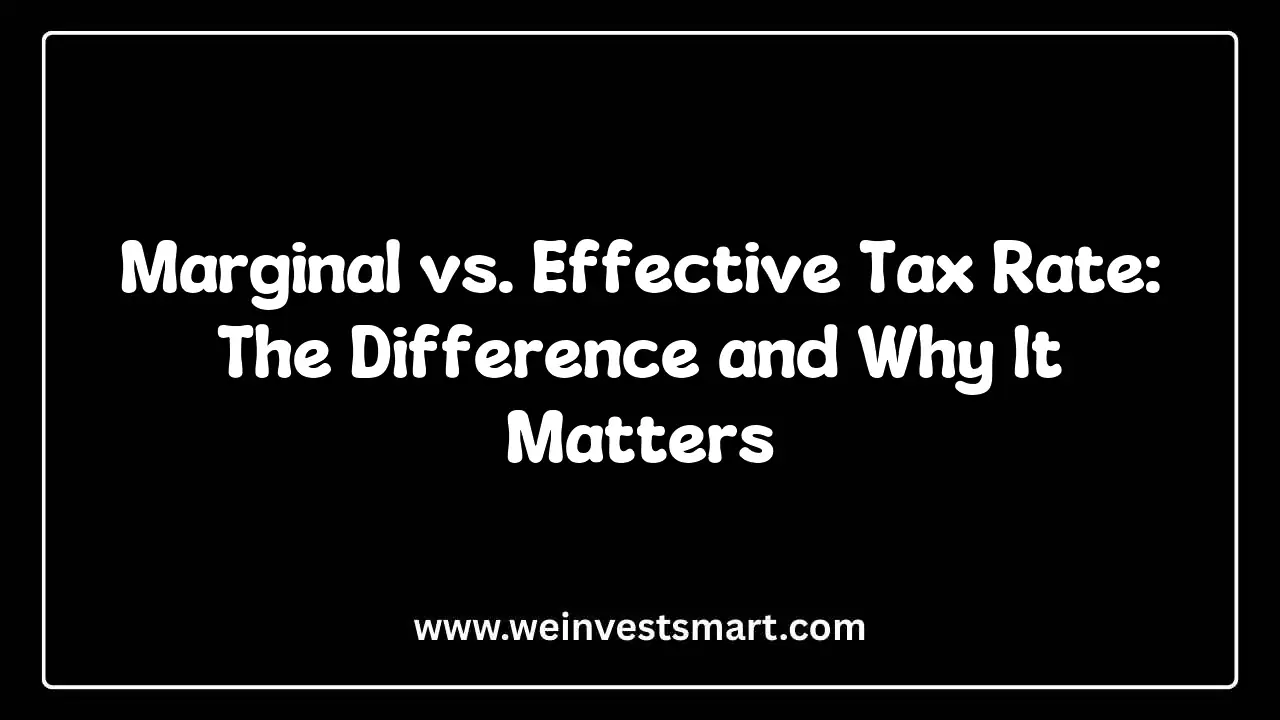· WeInvestSmart Team · personal-finance · 10 min read
Taxes for Newbies: Understanding Your Paycheck Stub and Basic Tax Deductions
Break down a sample paycheck. Explain what FICA, federal, and state taxes are, and what pre-tax vs. post-tax deductions (like 401k and health insurance) mean for your take-home pay.
Most of us remember the feeling of getting our first “real” paycheck. You see the big, impressive number at the top—your salary—and for a fleeting moment, you feel rich. Then your eyes drift down to the bottom line, the actual amount deposited in your bank account, and you’re hit with a wave of confusion and disappointment. But here’s the uncomfortable truth: that gap between what you earned and what you kept isn’t just a random act of financial gravity. It’s a detailed story of your financial life, written in a code you were never taught to read. Going straight to the point, your paycheck stub is the single most important financial document you receive regularly, and ignoring it is like trying to navigate a new city without a map.
We live in a world where we’re taught to negotiate our salary, but no one ever teaches us to negotiate our deductions. We see acronyms like FICA, Fed, and Med and treat them like an inevitable, unknowable force.
But what if we told you that hidden within that confusing list of deductions are powerful tools you can use to legally reduce your tax bill and accelerate your journey to building wealth? Here’s where things get interesting. Understanding your paycheck isn’t just about figuring out where your money went. It’s about learning how to strategically direct where your money goes in the future. And this is just a very long way of saying that it’s time to stop being a passive observer of your paycheck and start being an active participant in how it’s constructed.
Gross Pay vs. Net Pay: The Great Disappearing Act
Before we get into the weeds, let’s define the two most important numbers on your stub.
- Gross Pay: This is the big, exciting number. It’s your total earnings before any taxes or deductions are taken out. If your salary is $52,000 a year and you’re paid weekly, your gross pay is $1,000.
- Net Pay (or “Take-Home Pay”): This is the reality. It’s the actual amount of money deposited into your bank account after all the taxes and deductions have been subtracted. This is the money you actually have to live on.
The entire mystery of understanding your paycheck lies in understanding the journey from Gross to Net. This journey involves two types of subtractions: mandatory taxes and voluntary deductions.
The Mandatory Stuff: Understanding Taxes on Your Paycheck
You may also be interested in: How to Perform a Monthly Financial “Fire Drill”: Your 1-Hour Financial Health Checkup
This is the portion you have the least control over. These are taxes you are legally required to pay to federal, state, and local governments.
1. Federal Income Tax (“Fed Tax”)
Going straight to the point, federal income tax is money you pay to the U.S. government to fund everything from the military and national parks to federal agencies and infrastructure. The amount you pay is not a flat percentage; it’s based on a system of progressive tax brackets. The more you earn, the higher your tax rate on your highest dollars earned.
The amount withheld from your paycheck for federal taxes is determined by the information you provide on your Form W-4 when you start your job. This is where you list your filing status (single, married, etc.) and the number of dependents you have. The funny thing is that most people fill out their W-4 on their first day of work and never think about it again. But a major life event—like getting married or having a child—is a crucial time to update your W-4 to ensure you’re having the correct amount of tax withheld.
2. State and Local Income Tax
This is the state’s version of the federal income tax. It funds state-level services like schools, roads, police, and state parks. The rules vary dramatically by location. Some states, like Texas and Florida, have no state income tax at all. Others, like California and New York, have relatively high rates. Some cities even have their own local income tax on top of that.
3. FICA Taxes (The Other Big One)
Here’s the acronym that confuses everyone. FICA stands for the Federal Insurance Contributions Act. Going straight to the point, this is a U.S. federal payroll tax, and it’s split into two distinct parts. It’s not an income tax; it’s a social insurance tax.
- Social Security Tax (OASDI): This stands for Old-Age, Survivors, and Disability Insurance. This tax funds the Social Security program, which provides retirement, disability, and survivor benefits. You pay a flat rate of 6.2% on your gross income, but only up to a certain annual limit ($168,600 in 2024). Once you earn more than that in a year, you stop paying Social Security tax.
- Medicare Tax: This tax funds the Medicare health insurance program for Americans aged 65 and older. You pay a flat rate of 1.45% on all of your earnings, with no income limit.
Here’s where things get interesting. Your employer is also required to pay a matching FICA tax on your behalf. They pay 6.2% for Social Security and 1.45% for Medicare, for a total of 7.65%. So, in reality, a total of 15.3% of your income is going to FICA; you just only see your half on your paycheck stub.
The Strategic Stuff: Pre-Tax vs. Post-Tax Deductions
Now we move from the mandatory to the strategic. These are the deductions you often choose to have taken out of your paycheck. Understanding the difference between pre-tax vs. post-tax deductions is the secret to optimizing your take-home pay.
Pre-Tax Deductions: The Magic of Lowering Your Taxable Income
Going straight to the point, pre-tax deductions are amounts taken out of your gross pay before any income taxes are calculated. This is a huge deal. Why? Because it reduces your “taxable income,” which means the government calculates your taxes based on a smaller number.
Let me explain with a concrete example. Let’s say your gross pay is $2,000, and you’re in a 22% federal tax bracket.
- Scenario A (No Pre-Tax Deductions): Your taxable income is $2,000. The federal government will tax you on that full amount.
- Scenario B (With a $200 Pre-Tax Deduction): You contribute $200 to a pre-tax account. Your taxable income is now only $1,800 ($2,000 - $200). The government now calculates your taxes based on this much smaller number. You’ve instantly saved $44 in federal taxes (22% of $200).
Common pre-tax deductions include:
- Traditional 401(k) or 403(b) Contributions: This is the most powerful tool for retirement savings. When you contribute to a Traditional 401(k), you are saving for the future and getting an immediate tax break today. The $200 you contributed didn’t actually reduce your take-home pay by $200; it only reduced it by $156 because of the tax savings.
- Health Insurance Premiums: The portion of your medical, dental, and vision insurance premiums that you pay is almost always taken out on a pre-tax basis. This effectively gives you a discount on your health insurance equal to your tax rate. You may also be interested in: How to Lower Your Taxable Income (Legally): A Guide to Tax Credits and Deductions
- Health Savings Account (HSA) or Flexible Spending Account (FSA) Contributions: These are special accounts that allow you to save for healthcare expenses with pre-tax dollars, providing a powerful double tax advantage.
This sounds like a trade-off, because you’re seeing less in your final paycheck, but it’s actually a desirable thing. We covet pre-tax deductions because you are choosing to pay yourself (in the form of retirement or health benefits) before you pay the government.
Post-Tax Deductions: The “After the Fact” Stuff
Going straight to the point, post-tax deductions are amounts taken out of your paycheck after all of your taxes have already been calculated and withheld. These deductions do not reduce your taxable income.
Common post-tax deductions include:
- Roth 401(k) Contributions: This is the mirror image of the Traditional 401(k). You pay taxes on your contribution today, so there’s no immediate tax break. But in exchange, your investments grow and can be withdrawn completely tax-free in retirement.
- Disability Insurance Premiums: Short-term or long-term disability insurance premiums are often paid with post-tax dollars. The benefit of doing this is that if you ever need to receive disability benefits, that income will be tax-free.
- Union Dues or Charitable Contributions: Payments to a union or automatic charitable giving through your payroll are typically post-tax.
A Sample Paycheck Stub Explained, Line by Line
You may also be interested in: Good Debt vs. Bad Debt: A Beginner’s Guide to Understanding and Prioritizing Your Loans
Let’s put it all together and demystify a sample pay stub for our fictional employee, Alex, who earns a gross pay of $2,000 per pay period.
| Description | Amount |
|---|---|
| Gross Pay | $2,000.00 |
| Pre-Tax Deductions | |
| 401(k) Contribution | -$100.00 |
| Health Insurance Premium | -$50.00 |
| Total Pre-Tax Deductions | -$150.00 |
| Taxable Income | $1,850.00 |
| (Gross Pay - Pre-Tax Deductions) | |
| Taxes Withheld | |
| Federal Income Tax | -$203.50 |
| State Income Tax (5%) | -$92.50 |
| Social Security (6.2%) | -$124.00 |
| Medicare (1.45%) | -$29.00 |
| Total Taxes | -$449.00 |
| Post-Tax Deductions | |
| Roth 401(k) Contribution | -$50.00 |
| Total Post-Tax Deductions | -$50.00 |
| Net Pay / Take-Home Pay | $1,351.00 |
The Journey from $2,000 to $1,351:
- Alex starts with $2,000 in gross pay.
- First, the powerful pre-tax deductions come out. $100 for the 401(k) and $50 for health insurance. This lowers the taxable income to $1,850.
- Next, the government calculates taxes based on this lower number (except for FICA taxes, which are based on the full gross pay). A total of $449 is withheld for taxes.
- After the taxes are taken, the post-tax deductions are subtracted. In this case, $50 for a Roth 401(k).
- What’s left over is the net pay of $1,351 that gets deposited into Alex’s bank account.
The Bottom Line: From Confusion to Control
You may also be interested in: The Snowball vs. The Avalanche: Which Debt Payoff Method is Right for You? Your paycheck stub is not a passive document. It is an active report on the effectiveness of your financial strategy. It shows you not only what you’re paying in taxes, but also how much you’re investing in your future self through retirement contributions and health benefits.
By understanding the journey from gross to net, you can start to make more informed decisions. You can see the direct, powerful impact of increasing your pre-tax 401(k) contribution, not just on your retirement balance, but on your immediate tax bill.
You may also be interested in: The 7 Biggest Financial Mistakes Beginners Make (And How to Avoid Them)
And this is just a very long way of saying that financial literacy begins with understanding the money you already earn. So, pull out your last paycheck stub. Don’t be intimidated by it. Look at the lines. Identify the different types of taxes and deductions. It’s not a test you can fail. It’s your money. It’s time you understood exactly where it’s going, and why.
Understanding Your Paycheck Stub FAQ
What is the difference between gross pay and net pay?
Gross pay is your total earnings before any taxes or deductions. Net pay, or take-home pay, is the amount you actually receive after taxes and deductions are subtracted.
What are FICA taxes?
FICA taxes fund Social Security and Medicare. They include a 6.2% Social Security tax (up to $168,600 in 2024) and 1.45% Medicare tax on all earnings. Your employer pays a matching amount.
What is the difference between pre-tax and post-tax deductions?
Pre-tax deductions, like 401(k) contributions, reduce your taxable income and lower your tax bill. Post-tax deductions, like Roth IRA contributions, are taken after taxes and don’t reduce your taxable income.
How can I reduce my taxes?
Maximize pre-tax deductions like 401(k) contributions, health insurance premiums, and HSA contributions. Update your W-4 form if you have major life changes like marriage or children.
What is a W-4 form?
A W-4 form tells your employer how much federal income tax to withhold from your paycheck. You should update it when your filing status, dependents, or income changes to ensure proper tax withholding.
This article is for educational purposes only and should not be considered personalized financial advice. Consider consulting with a financial advisor for guidance specific to your situation.



